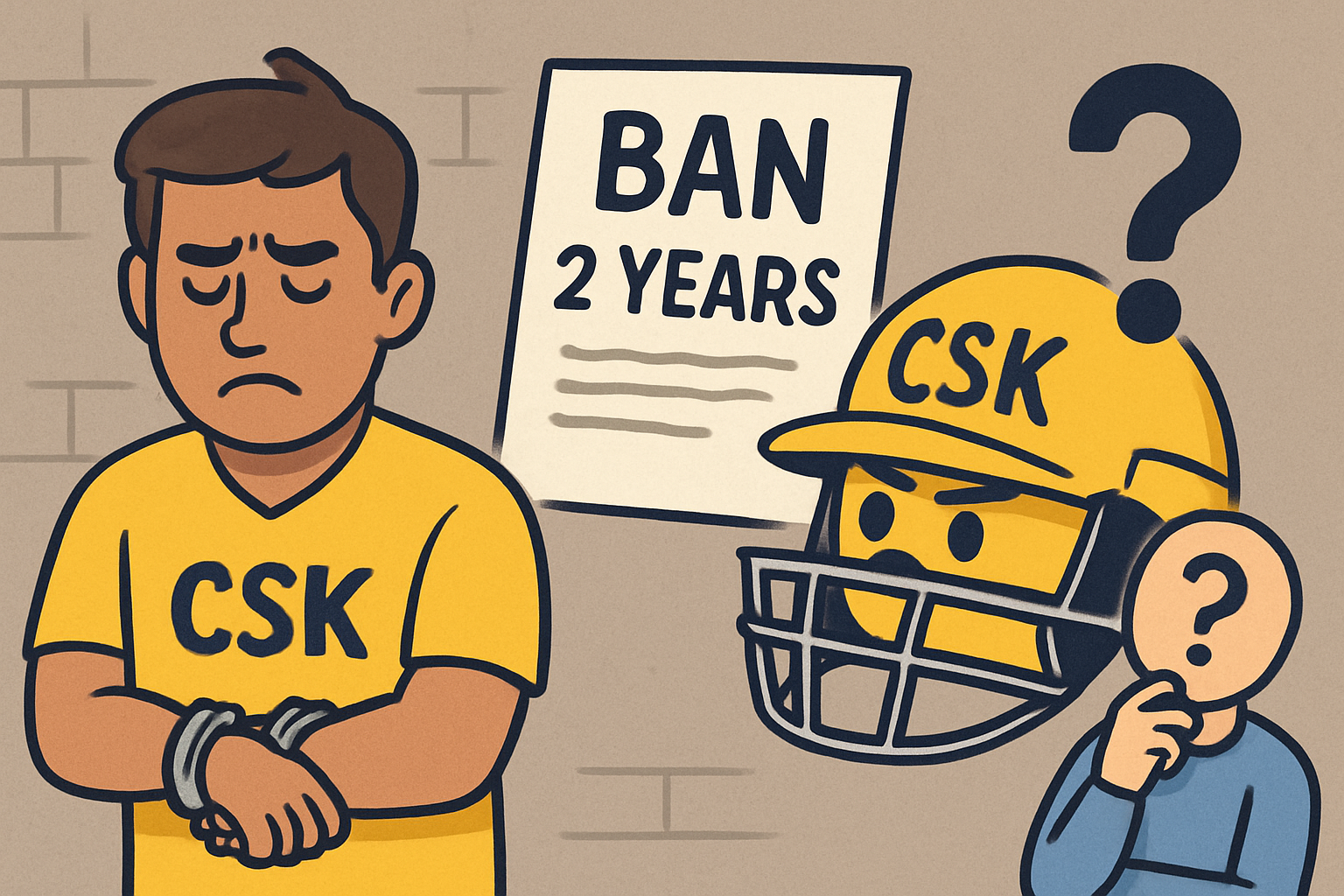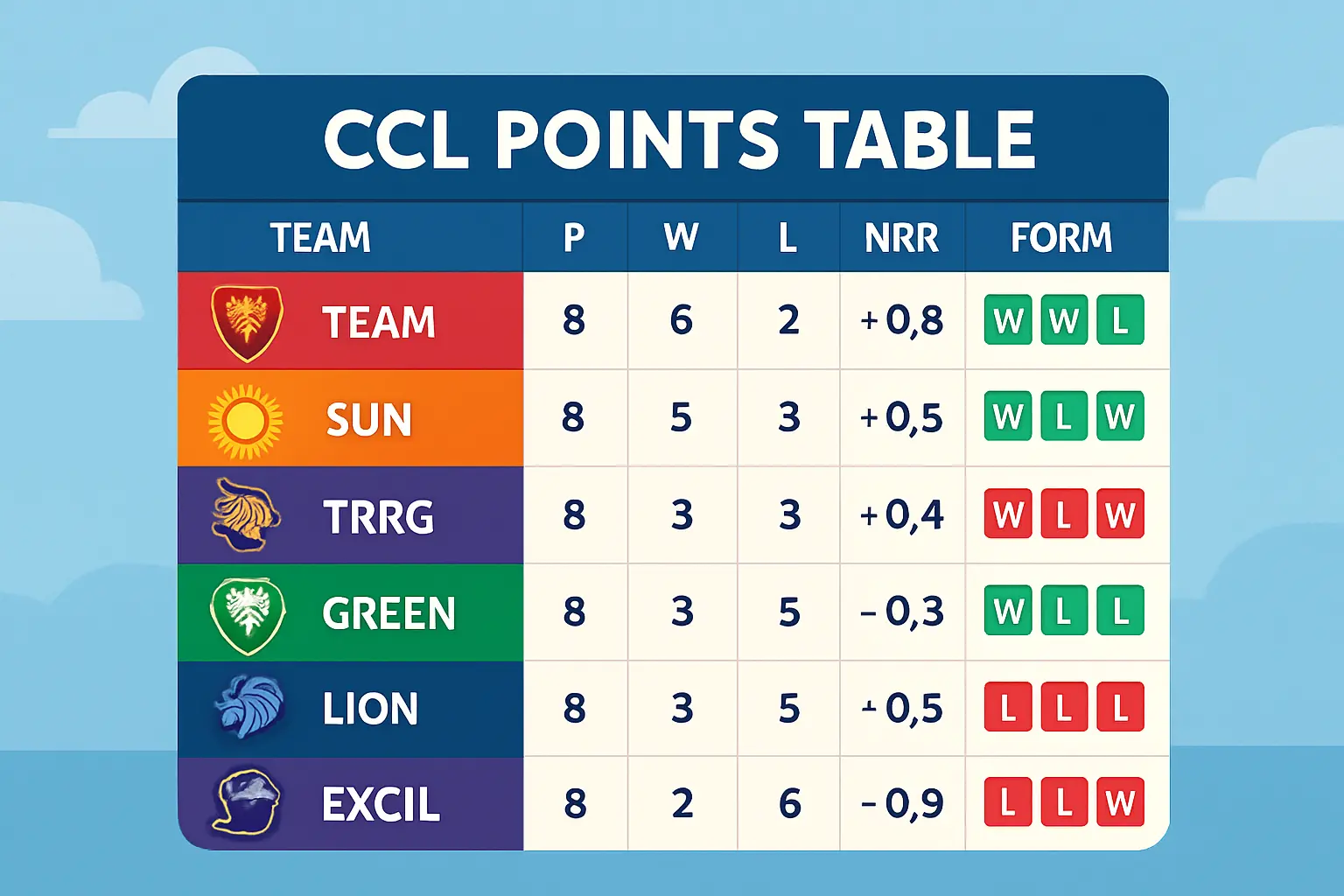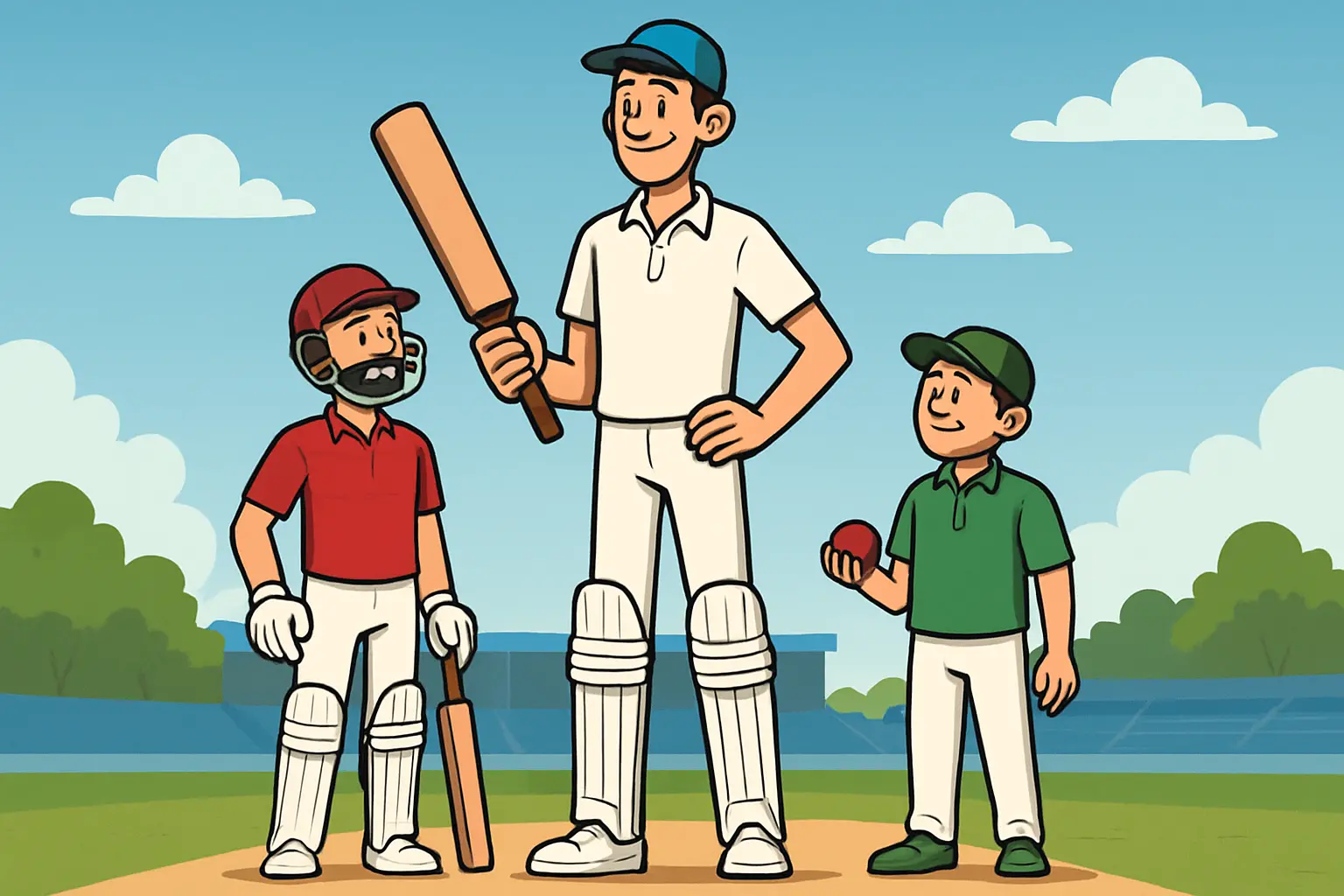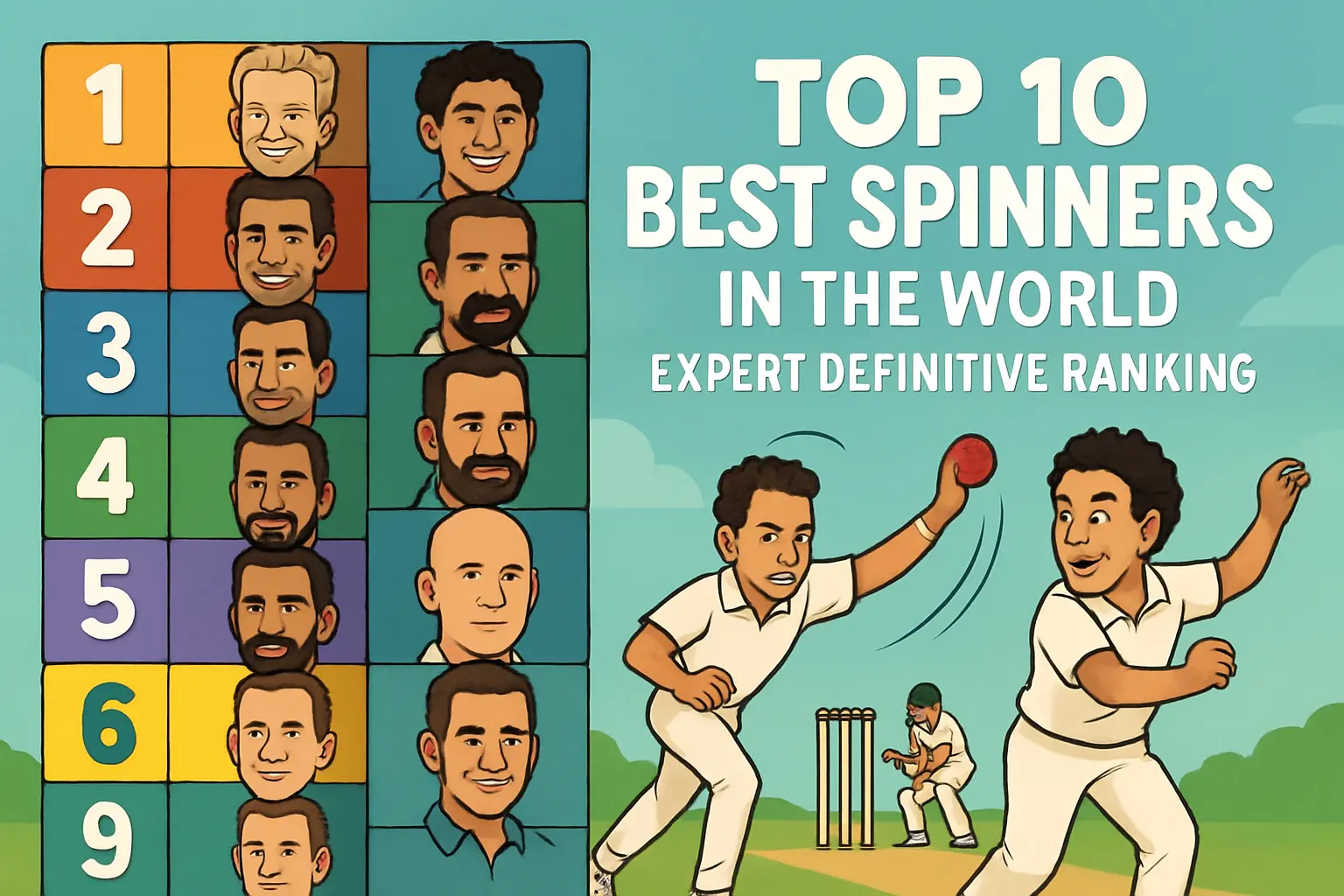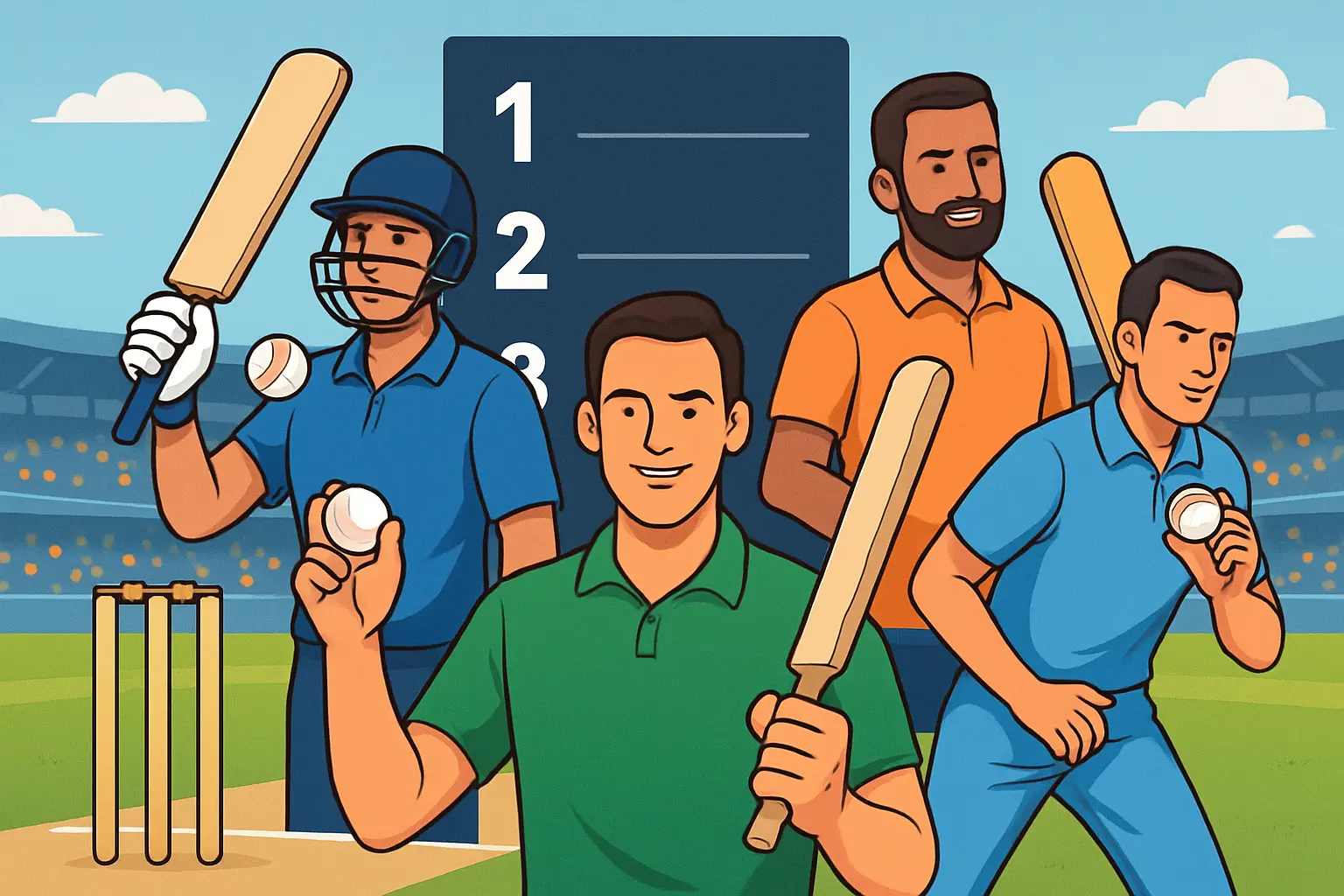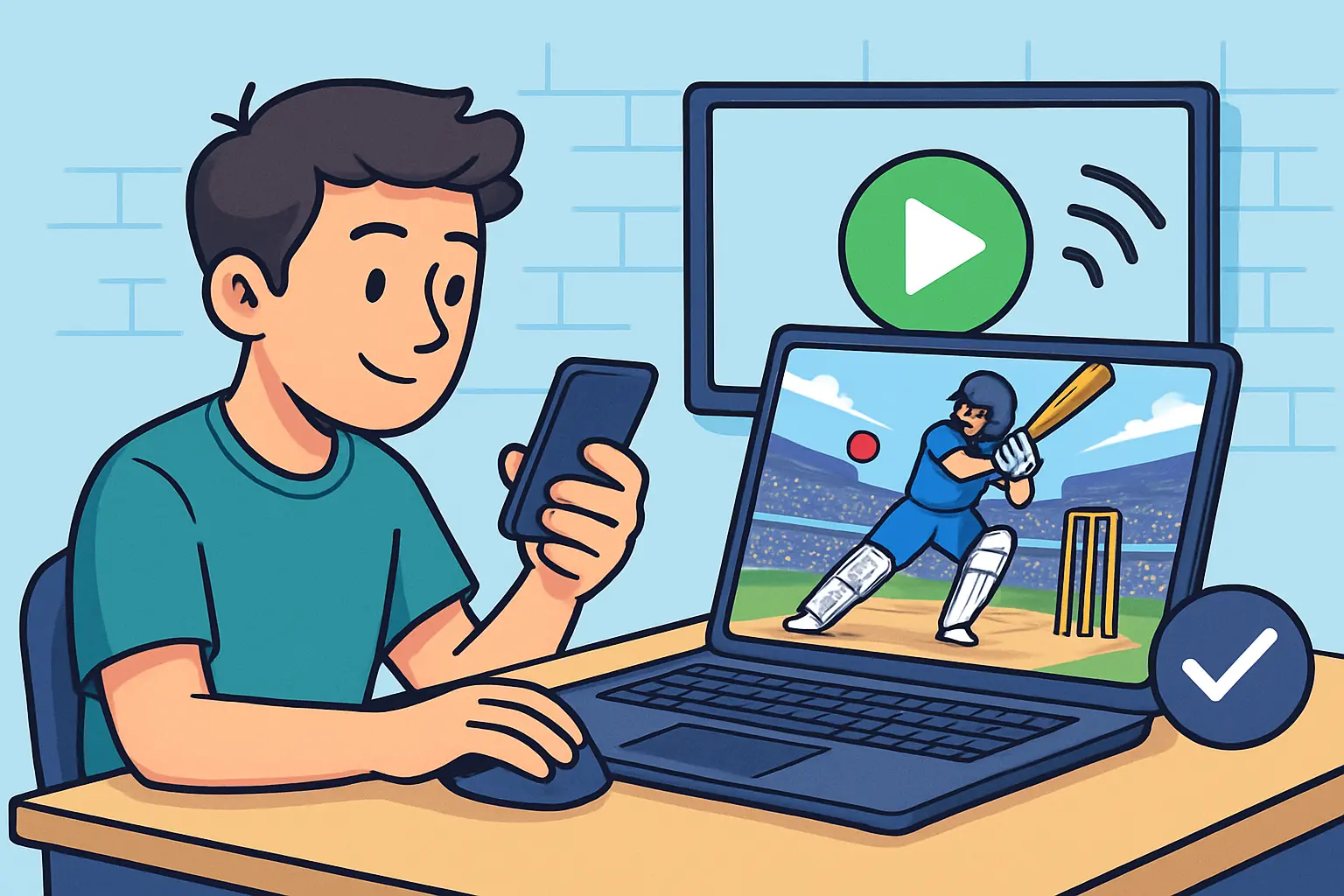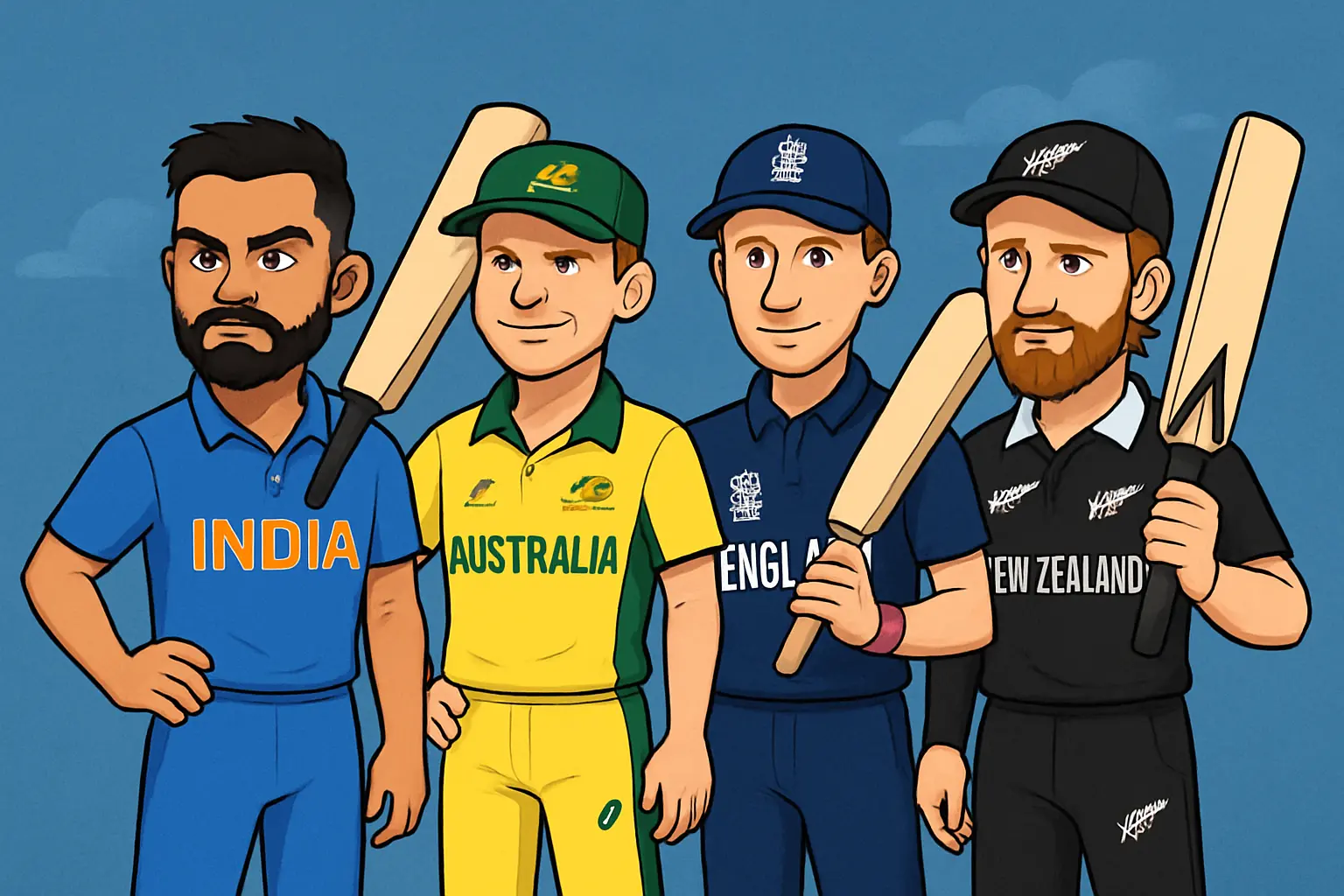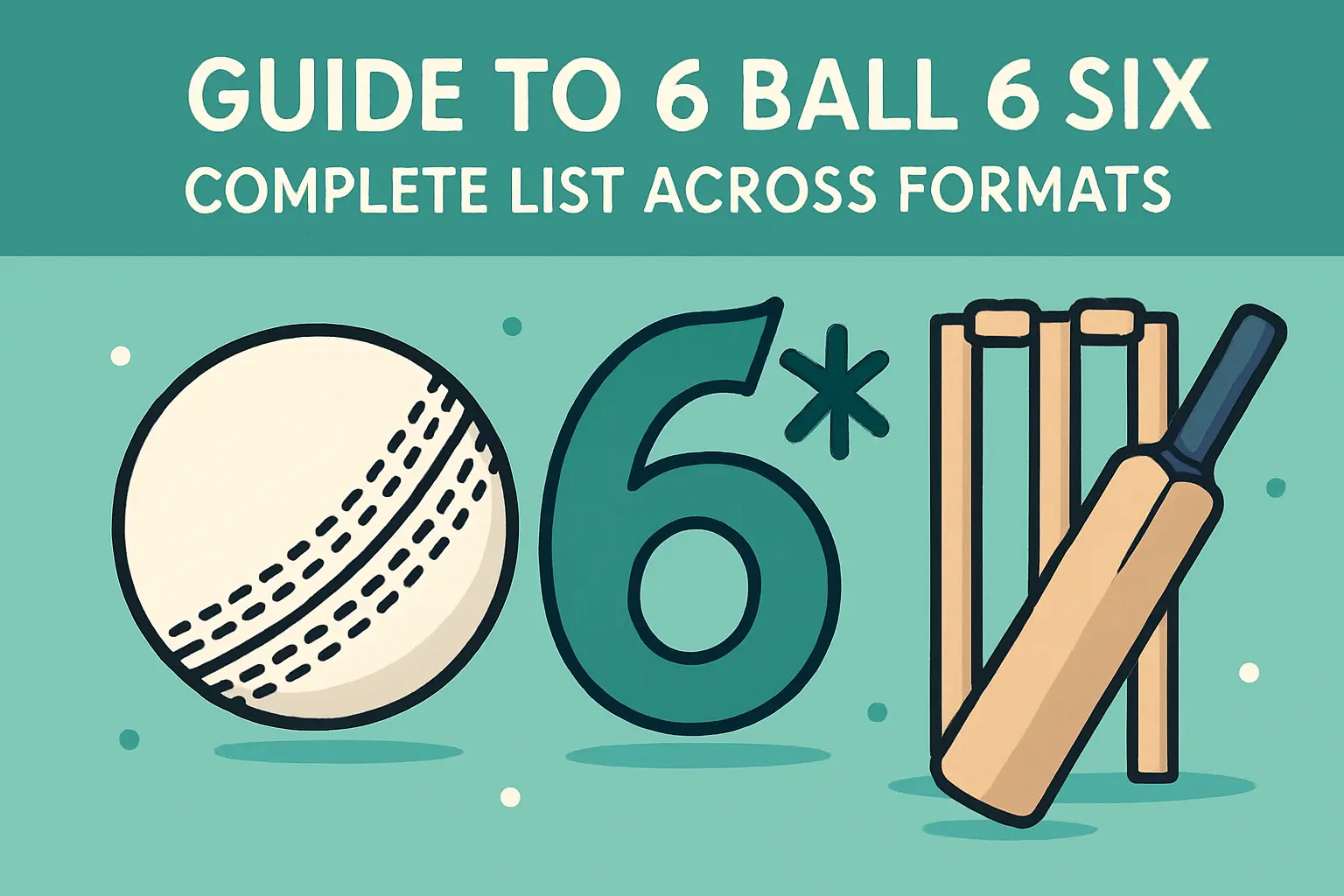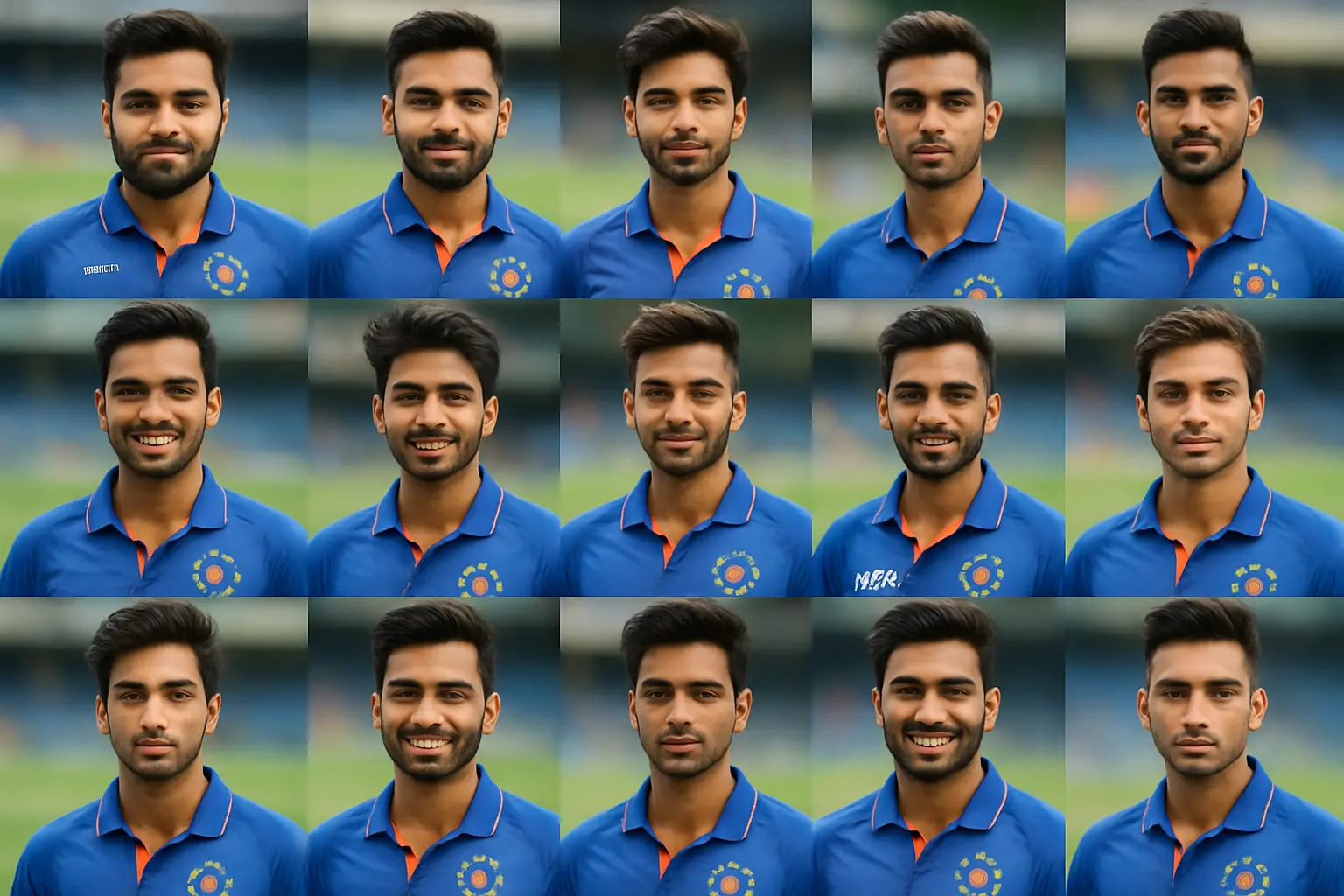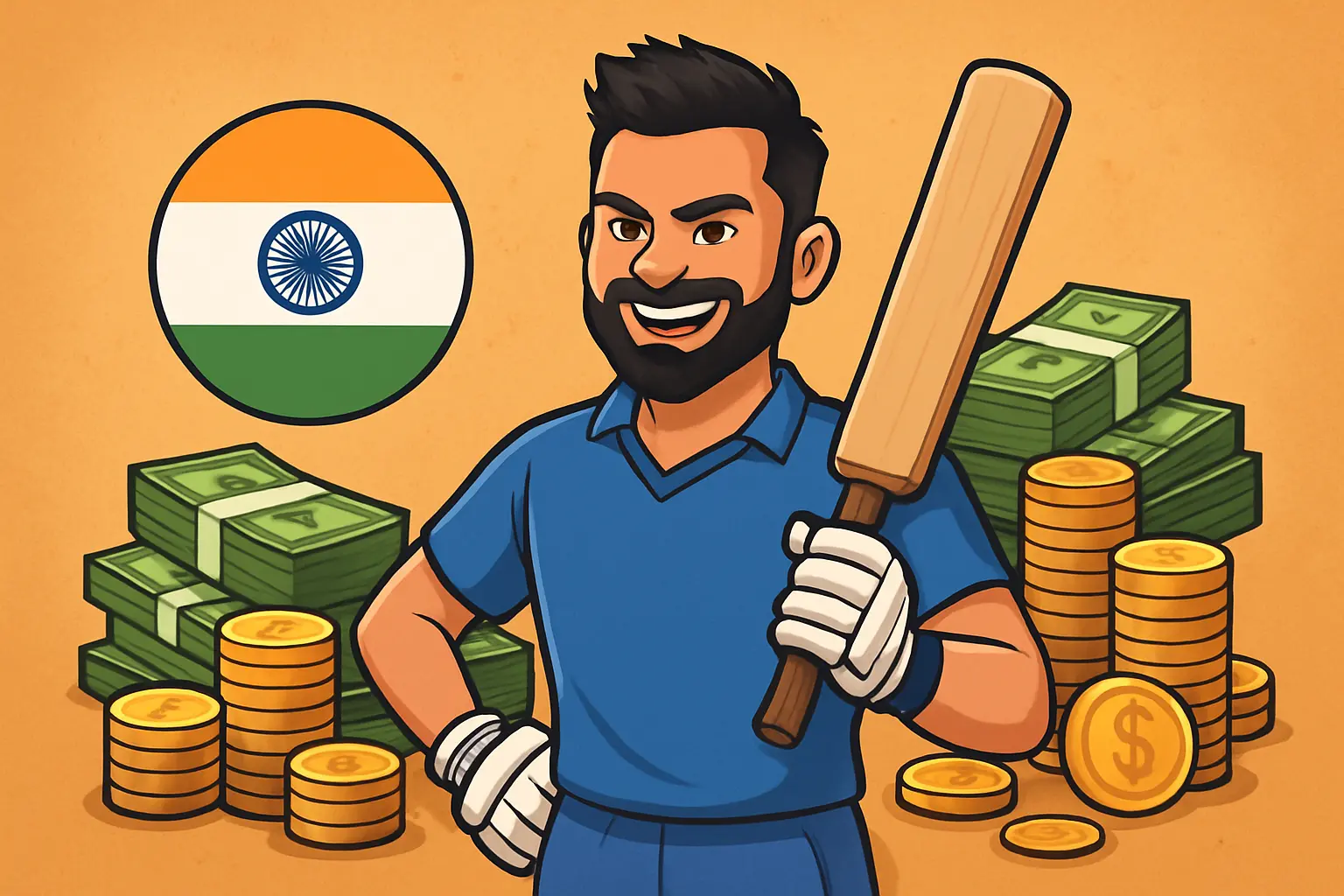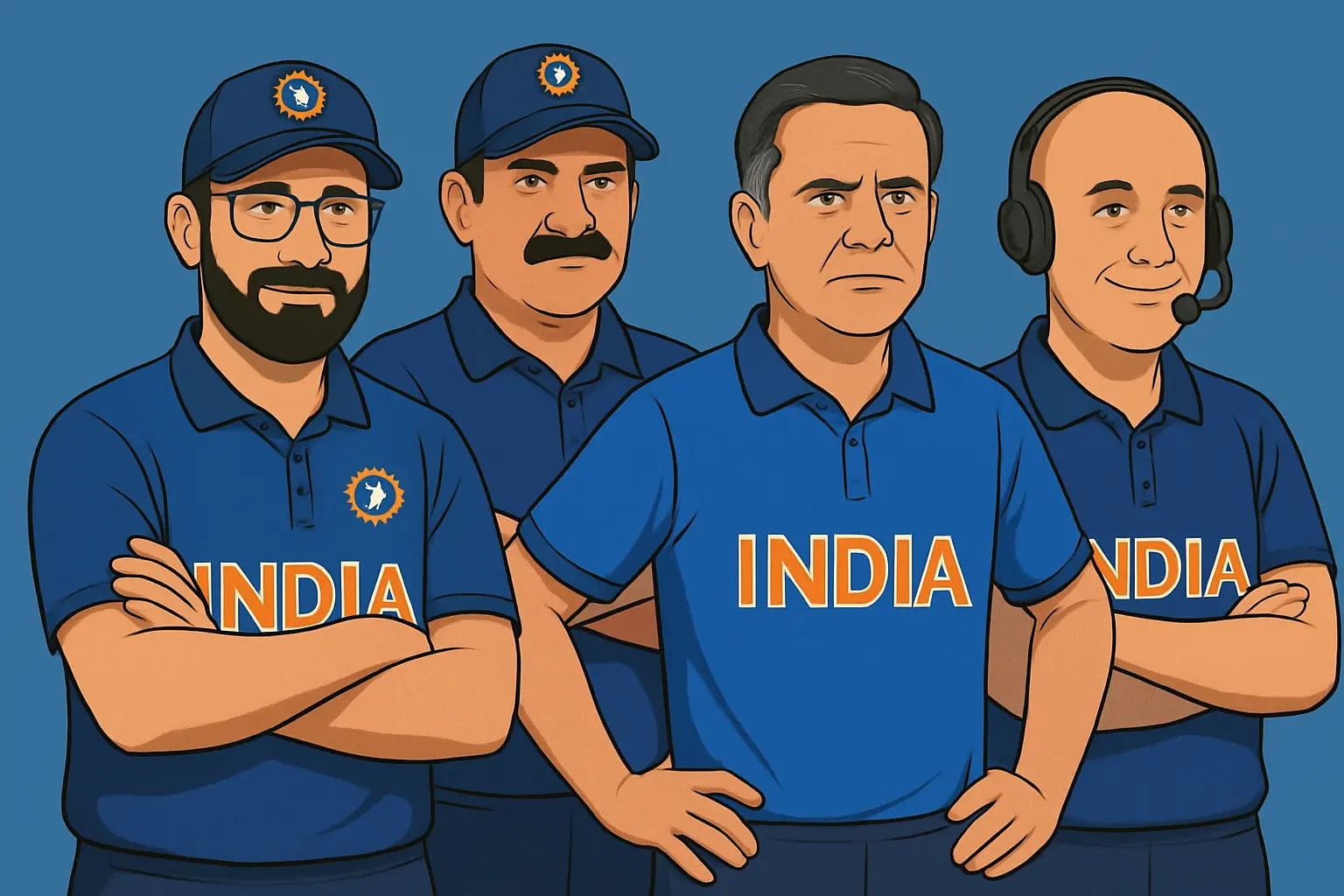Chennai Super Kings were suspended from the IPL for two seasons after a Supreme Court–appointed panel, widely known as the Lodha Committee, found a senior team official, Gurunath Meiyappan, guilty of betting and passing inside information. The penalty targeted franchise governance failures, not players; CSK returned to the league after serving the full suspension.
The heart of the matter
Strip away the noise, and the csk ban reason is stark. A team official—recognized by the court as part of the franchise setup, not a mere enthusiast—engaged in betting, an act prohibited for anyone connected to the game’s ecosystem. The Lodha Committee concluded that the franchise bears responsibility for its officials, and that the integrity of the league was compromised. On that basis, CSK were suspended for two IPL seasons. This wasn’t a player scandal. It wasn’t about match-fixing charges against the team. It was a governance sanction rooted in accountability standards every franchise agrees to when it signs on to the league.
A quick primer on terms before we go deeper
The punishment imposed was a suspension, not a permanent ban. Practically, fans and headlines often call it a “ban,” because it kept CSK off the field for two full campaigns. Legally and administratively, the franchise was suspended from the tournament for two seasons, after which it re-entered the competition.
How the scandal unfolded inside the IPL’s carnival
Those were heady days for the IPL. Franchises had built loyal cities-on-wheels: travel plans choreographed with military precision, analyst cabins thick with data, practice wickets sweating under floodlights. CSK, with their cool-headed captaincy and methodical auction strategy, were a model of consistency. Away from the visible glamour, every team’s backroom hummed—logistics managers, media liaisons, data scouts, hospitality leads, security, and the inner decision group that bridges owners to cricket operations.
In a season that should have been remembered for fierce finishes and tactical experiments, the league instead collided with allegations of spot-fixing and betting. Sentiment changed from carnival to courtroom. The immediate result was an independent inquiry under the oversight of the Supreme Court, which first asked a probing panel—commonly referred to as the Mudgal Committee—to investigate, and later tasked the Lodha Committee with deciding punishments and recommending governance reforms.
The Mudgal phase: who, what, and why it mattered
The Mudgal Committee’s work was granular. It separated rumor from evidence, took depositions, examined call records and testimonies, and clarified who counted as a “team official.” That classification became decisive. Gurunath Meiyappan, associated with CSK and seen sitting in the dugout, traveling with the team, and privy to internal discussions, was held to be a team official in the committee’s understanding and later in court.
Two threads emerged:
- Individual guilt: Meiyappan was involved in betting and passing on information that could influence betting markets. The restriction is absolute—players, support staff, and team officials cannot bet on cricket.
- Franchise responsibility: If a team official breaks the code, is the franchise liable? The answer under the league’s disciplinary framework leaned toward franchise accountability. A franchise is expected to create guardrails to prevent such breaches, and is vicariously responsible for its officials.
The Supreme Court, weighing the Mudgal findings, recognized Meiyappan as a team official and paved the way for the Lodha Committee to hand out punishments and prescribe reforms. That clarity—he is a team official—closed the door on a common early defense that he was simply an enthusiastic “cricket lover” with access.
The Lodha Committee’s verdict: why CSK were suspended for two seasons
The Lodha Committee arrived with a mandate: determine sanctions for individuals and franchises linked to betting or related misconduct, and recommend structural reforms to clean up governance. Crucially, the committee differentiated between personal wrongdoing and institutional accountability.
What the committee found and concluded
- Meiyappan’s role: He was an official of the franchise and had engaged in betting and passed inside information to bookies. Under the league’s and BCCI’s anti-corruption code, betting by any official is strictly prohibited.
- Institutional accountability: The franchise bears responsibility for the actions of its officials. The committee underscored that a league’s credibility rests on its teams enforcing anti-corruption norms internally.
- Proportional punishment: The committee opted against franchise termination. Instead, it recommended suspending the team from participating in the IPL for two seasons—a punishment strong enough to deter, yet leaving room for rehabilitation.
Penalties imposed
- For the individual: Meiyappan was banned for life from participating in any cricket activities administered by the BCCI and its affiliates.
- For the franchise: CSK were suspended from the IPL for two seasons. Players and support staff were not individually banned by virtue of belonging to CSK; they remained eligible to play for other teams or in other competitions managed by the BCCI.
The legal basis of the csk suspension explained
The lodha committee verdict csk drew on multiple pillars:
- IPL franchise agreements and operational rules: Franchise contracts create obligations to maintain the integrity of the league. They provide for sanctions—up to termination—if team officials engage in prohibited acts, including betting or activities that bring the league into disrepute.
- BCCI’s Anti-Corruption Code: Absolute prohibition on betting by anyone officially connected to teams or matches. Officials are treated just like players under anti-corruption prohibitions on betting and passing inside information.
- Principle of vicarious responsibility: A franchise controls who has access to internal information. If a team official misuses that access, the franchise has failed in its duty of supervision and compliance, and the league is entitled to sanction the franchise.
Suspension vs “ban”: words matter
Media shorthand called it a ban. In the letter of the verdict, CSK were suspended for two IPL seasons. Why that matters:
- Suspension means reinstatement is expected after the punishment finishes, assuming compliance.
- A ban or termination would have dissolved the franchise’s participation rights altogether, potentially voiding ownership’s position and changing the legal and commercial landscape entirely.
In common cricket vocabulary, the distinction blurs. Fans said “ban” because the team disappeared from the schedule for two editions. But the technical term in the decision was suspension, and that technicality explains why the return pathway was so clear.
Why CSK and RR were both punished; how CSK’s case was distinct
The csk vs rr suspension reasons looked similar on the surface—betting by a team official linked to each franchise—but the contexts differed.
- CSK: Team official involved in betting and passing insider information. Linkages to the larger governance environment were a flashpoint, including the conflict-of-interest debate around the then-power center in Indian cricket.
- RR: A co-owner, Raj Kundra, was found guilty of betting. Ownership-level involvement increased perceived gravity, though both cases triggered the same franchise-level sanction.
Comparison of franchise punishments
| Offending official | Offense type | Penalty to individual | Penalty to franchise | Key legal basis | |
|---|---|---|---|---|---|
| CSK | Gurunath Meiyappan, recognized as a team official. | Betting and passing inside information. | Life ban from cricketing activities under BCCI. | Suspension from IPL for two seasons. | Vicarious responsibility; breach of anti-corruption and operational rules by a team official. |
| Rajasthan Royals | Raj Kundra, co-owner. | Betting. | Life ban from cricketing activities under BCCI. | Suspension from IPL for two seasons. | Vicarious responsibility; breach of anti-corruption and operational rules by an owner. |
Is this about match-fixing? The myth that refuses to die
The cleanest way to bust the myth: was csk banned for match fixing? No. The franchise was punished because a team official was found guilty of betting and sharing internal information with bookmakers. Betting by team officials is prohibited, full stop. The Lodha Committee did not find that CSK as a team fixed matches, nor were CSK players banned on that ground. Several players who wore yellow in those seasons went on to play in the IPL during the suspension period for other franchises.
The difference between betting and spot-fixing in the IPL context
Betting is placing wagers on the outcome of matches or events within matches. For anyone associated with a team—officials, support staff, players—it’s prohibited, regardless of whether inside information was used. It’s a direct conflict with the obligation to preserve integrity.
Spot-fixing involves manipulating specific micro-events in a match—like deliberately bowling a no-ball at a pre-agreed moment—often for betting market gains. It requires collusion with on-field participants and is a more direct assault on the integrity of play. The scandal that triggered the inquiries included allegations and cases of spot-fixing against certain players from other franchises; however, CSK’s two-season punishment stemmed from a team official’s betting and information-passing, not spot-fixing by CSK players.
The conflict-of-interest storm and governance failures
One cannot tell the full story of why CSK were banned without acknowledging the governance climate. The club’s parentage and its proximity to the most powerful office in Indian cricket created mistrust. The conflict-of-interest debate boiled down to a simple question: can an administrator who heads the national board also be closely tied to a franchise competing in a tournament run by that board? Even if everything is above board, the perception problem is severe.
The Supreme Court’s interventions addressed this, ultimately leading to structural reforms. While the conflict-of-interest issue is not the formal reason for the two-season CSK suspension, it formed the larger context. The Lodha Committee’s recommendations went beyond punishments; they sought to redesign how cricket administration polices itself, so that no franchise or official could claim ambiguity around rules.
What the suspension meant for CSK: players, staff, and fans
A franchise isn’t just a logo. It’s a living organism built season after season: analysts fine-tune match-ups; throwdown specialists sculpt batters’ hitting arcs; captains shape leadership groups and tempo; batting coaches read opposition lengths like stock market charts. The suspension fractured that continuity for two cycles.
Players and staff
- Players were not banned. Contracts ended or were restructured, and talent went into the auction pool or found other opportunities. Many familiar faces from CSK featured in other squads during this period.
- Senior leaders, including MS Dhoni, stayed active in the league, but with different badges on their jerseys for those two editions. The leadership’s presence elsewhere acted like CSK DNA spreading across the league—calm at the death, data-led match-ups, and a taste for taking a chase deep.
- Support staff faced difficult choices: switch allegiances temporarily or sit out. The best analysts and coaches are in demand; several found work elsewhere.
Commercial and fan impact
- Sponsors and local partners lost two summers of marquee exposure. For a franchise that drives merchandise sales and stadium experiences, that’s painful.
- Yet the fan base didn’t leak away. If anything, the absence strengthened the tribe. “Whistle Podu” became a promise—of return, not retreat.
- Brand equity dipped in visibility but gained in resilience. Scarcity can have a paradoxical effect in sport: the missing team becomes a folk tale, and the comeback gathers momentum before a ball is bowled.
Inside the team room: how a suspension forces self-examination
Two cycles away from the league also force a franchise’s leadership to audit its own methods and governance. Good teams don’t waste a crisis. In practice this meant:
- Rewriting access protocols. Who sits in cricket meetings? Who can travel with the team? What is the chain of custody for sensitive information, such as final XIs and batting orders?
- Revalidating integrity briefings. Anti-corruption briefings, already routine, were deepened. Education changed from one-off presentations to continuous reinforcement with scenario-based drills.
- Negotiating new internal firewalls. Distinct lines were drawn between owners, team officials, and cricket operations. Social access to players—meals, travel, non-cricket hospitality—fell under stricter oversight.
CSK’s return and what came after
When CSK returned to the IPL, it felt like a festival resuming after a curfew. The comeback wasn’t a sentimental lap—it was competitive from ball one. They won the title in their first season back, a statement that the cricket Core—strategy, talent identification, cohesion—remained intact.
Since then, they’ve added more silverware and playoff runs, often with the familiar rhythms that came to define them:
- Auction discipline: pick roles, not names; select utility pieces who fit the captain’s vision; bet on experience in high-pressure roles.
- Home fortress advantage: curate plans for the unique bounce, pace, and lengths that Chepauk demands, while assembling a roster that can win in contrasting conditions.
- Leadership continuity: unchanged leadership ethos—calmness under extreme pressure, tactical small-ball in the middle overs, and relentless focus on match-ups rather than star power.
In the years after the suspension, CSK’s record is an argument for the power of systems. A governance failure cost the franchise two seasons. Thorough internal changes and a recommitment to accountability helped underpin an era of renewed competitiveness.
BCCI reforms after the Lodha Committee: what changed
The lodha committee verdict csk was one part of a larger blueprint for reform. The committee’s recommendations reshaped Indian cricket administration. Highlights include:
- Conflict-of-interest rules: Clear definitions and prohibitions. A person cannot hold positions that might compromise impartiality across administration, team ownership, or player management.
- Cooling-off and tenure limits: Administrators must step aside after fixed terms, with cooling-off periods to break power consolidation.
- Ethics and Ombudsman: Independent roles to handle integrity complaints and conflicts.
- Professionalization: Greater separation between elected office-bearers and professional management; more transparent decision-making.
- State unit restructuring: Governance standards imposed on state associations, including transparency and accountability norms.
These reforms traveled well beyond CSK. They altered how cricket is governed in India, seeking to insulate the sport from conflicts, concentrate accountability, and strengthen anti-corruption compliance.
The legal and operational framework behind the punishment
To appreciate why csk banned for 2 years—read: suspended for two seasons—one must understand the documents and codes at play.
- Franchise Agreement: The contract between a franchise and the BCCI includes clauses allowing punitive action if the franchise, its owners, or its officials engage in activities that bring the league into disrepute or violate anti-corruption provisions. These range from fines to suspension and termination.
- IPL Operational Rules and Code of Conduct: These rules govern daily operations—team composition disclosures, player and official conduct, media interactions, and anti-corruption compliance. Information considered “inside”—like team strategies, fitness statuses, and tactical plans—cannot be leaked to anyone outside the authorized group.
- Anti-Corruption Code: Absolute ban on betting by anyone connected to the game—players, match officials, support staff, and team officials. Passing inside information to bettors is itself a grave offense, even without manipulation of play. The code prescribes individual penalties and recognizes the need for organizational accountability.
The Lodha Committee applied these frameworks to find individual guilt and institutional failure, then imposed a proportionate penalty that both punished and deterred.
Timeline of the CSK suspension without dates
- A thrilling IPL season is marred by allegations of spot-fixing and betting.
- The Supreme Court supervises an independent inquiry, commonly called the Mudgal Committee, to ascertain facts and roles.
- Mudgal findings establish that certain individuals associated with teams engaged in betting and that Meiyappan should be treated as a team official.
- The Supreme Court affirms the “team official” designation and appoints the Lodha Committee to determine punishments and propose governance reforms.
- The Lodha Committee bans Meiyappan and another team-linked figure from any cricketing activity under the BCCI and suspends CSK and RR for two IPL seasons.
- Two IPL editions take place without CSK and RR.
- CSK return to the IPL and win the title in their comeback season, then remain a consistent contender in subsequent years.
Why this mattered beyond one team and one league
Sport runs on trust. The scoreboard means nothing if fans don’t believe the contest is honest. In the wake of these events, the IPL—and Indian cricket more broadly—had to show that governance could be swift, fair, and independent. By choosing suspension over termination, the Lodha Committee preserved the league’s competitive integrity while signaling zero tolerance for corruption. It also left space for franchises to reform and for fans to believe in redemption that comes with accountability.
Inside information: how it flows, why it’s valuable, and why rules choke it off
In modern T20 cricket, inside information is everything. A niggle in a fast bowler’s calf can determine whether a team plays an extra batter or a wrist-spinner. A choice to bat left-handers at three and five can be a direct response to the opponent’s match-up pattern. That means seemingly minor details—batting order, a player’s hand brace, a tactical plan to bowl wide yorkers to a particular finisher—carry financial value in betting markets.
Teams regulate who sits in tactical meetings, who travels on the charter, and who stands near the dugout not merely for glamour but for information governance. A “team principal” or official who has access—by position or permission—cannot treat that information casually. He represents the franchise, and the franchise is duty-bound to police that access. When this breaks, the punishment inevitably moves up the chain of accountability.
Did the punishment fit the crime?
The Lodha Committee’s reasoning was calibrated. Lifetime bans for individual offenders drew a hard line: you bet, you’re out. Franchise suspensions, not termination, balanced deterrence with recognition of the franchise’s larger stakeholder footprint—players, staff, suppliers, and a broad fan community. CSK’s case embodied that balance. The punishment hurt, but it also allowed for a return if lessons were learned and structures were improved.
Lessons from the CSK ban for sports governance in India
- Clarity of roles: Who is a “team official”? Put it in writing. Grant access sparingly. Keep logs.
- Firewalls: Separate ownership, management, and cricket operations. Build compliance into the DNA of a team.
- Independent oversight: Anti-corruption officers must be empowered and truly independent on match days and throughout the season.
- Education: Players and officials need continuous training. The best compliance programs use case studies, simulations, and refreshers through the season.
- Transparency in administration: The larger governance reforms—conflict-of-interest rules, ethics enforcement, cooling-off—are not window dressing. They are the foundation of trust.
CSK records and aura after the return
After their return, CSK didn’t tiptoe back. They surged. A title in the comeback season symbolized the cultural sturdiness of the franchise. The aura—the calm chases, the hold-ur-nerve death bowling, the tactical fluidity—was still there. Subsequent seasons added more silver and playoff appearances. The captain’s legend only grew: even as the reflexes aged, the mind sharpened, and close games kept tilting toward yellow. The Chepauk stands did the rest.
Understanding the human side
Behind every integrity breach is a series of small human mistakes. Someone assumes a chat is harmless. Someone else thinks sharing a playing XI early is a victimless inside joke. Sport demands better. The CSK suspension is a case study in how systems and culture must conspire to prevent small lapses from snowballing. It’s also a story of how a team can face the music, rebuild trust, and return to perform at the peak of elite sport.
Frequently asked questions
Why was CSK banned for 2 years?
CSK were suspended from the IPL for two seasons after a Supreme Court–appointed panel, the Lodha Committee, found that team official Gurunath Meiyappan engaged in betting and passed inside information, violating anti-corruption rules. Under franchise accountability principles, the team was punished even though players were not implicated in match-fixing.
Was CSK banned for match fixing?
No. The suspension stemmed from betting and information-passing by a team official, not from match-fixing by CSK players. The committee’s punishment centered on governance failures and vicarious responsibility.
Did Dhoni get banned with CSK?
No. MS Dhoni was not banned. The punishment applied to the franchise. Players were free to play in the IPL during the suspension period, and several—including Dhoni—played for other teams in those editions.
Were CSK players banned?
No. Individual CSK players were not banned on account of the franchise’s suspension. Contracts were resolved as per league rules, and players could be auctioned or signed by other teams.
Who is Gurunath Meiyappan in the CSK context?
Meiyappan functioned as a team official with access to the dugout, team travel, and internal information. The court treated him as an official rather than a casual supporter. He was found guilty of betting and passing inside information and received a life ban from cricket activities under the BCCI.
What did the Lodha Committee say about CSK?
The committee held that a CSK team official, Meiyappan, had engaged in betting and passed inside information, violating anti-corruption rules. It emphasized franchise accountability for officials’ conduct and suspended CSK for two IPL seasons as a proportionate penalty.
What is the legal basis of the CSK suspension?
The legal basis combines the IPL franchise agreement, the league’s operational rules, and the BCCI’s Anti-Corruption Code. Together, these frameworks bar betting by team officials and impose franchise-level accountability and sanctions when those prohibitions are violated.
Why were CSK and Rajasthan Royals banned?
Both were suspended for two seasons because team-linked figures engaged in betting—Meiyappan for CSK and co-owner Raj Kundra for RR. The committee applied similar franchise-accountability logic to both teams.
What changed in BCCI after Lodha reforms?
Key reforms addressed conflict-of-interest rules, introduced term limits and cooling-off for administrators, established ethics and ombudsman mechanisms, professionalized management, and imposed governance standards on state associations. These changes sought to insulate cricket administration from conflicts and improve integrity.
Is the CSK ban lifted now?
Yes. CSK served the two-season suspension and returned to the IPL. The franchise quickly re-established itself as a title contender and champion in the seasons that followed.
What is the difference between betting and spot-fixing in the IPL?
Betting is wagering on match outcomes or specific events; it’s prohibited for anyone connected to the game. Spot-fixing is manipulating specific in-game moments—like bowling a no-ball intentionally at a pre-arranged time—to profit betting markets. The CSK suspension arose from betting and information-passing by a team official, not spot-fixing by CSK players.
Lodha Committee’s broader impact on the IPL
The Lodha Committee’s recommendations reorganized not only punishment mechanisms but the DNA of IPL governance. By centering transparency and accountability, they institutionalized:
- Independent ethics scrutiny.
- Clear demarcations of roles to minimize conflicts.
- Stronger anti-corruption protocols applying equally to players, officials, and administrators.
- Greater professional management within the BCCI and franchises.
From newsroom benches to dressing rooms: eyewitness textures
Covering the IPL from the ground for years gives you a feel for the peculiar texture of its corridors. Team officials congregate in restricted hospitality areas after toss, phones buzzing with sponsor commitments and last-minute logistics. Security cordons are real; so are the accidental leaks—who had a scan, who pulled up in the warm-up, who looked a bit stiff in fielding drills. Little details create huge swings in betting markets. It takes only one weak link for inside information to slip out.
After the suspension, CSK tightened those corridors. Access to the dugout was strictly tiered. Media interactions with support staff were formalized, not casual. Even on travel days, lists of who boarded the team bus were shorter. These aren’t just optics; they’re internal controls.
Why this case will be taught in sports law classrooms
- It distinguishes individual guilt from institutional accountability.
- It shows how courts and independent panels can cleanly separate sentiment from sanction.
- It demonstrates proportionality: life bans for individuals; fixed-term suspension for franchises.
- It sets precedent for conflict-of-interest architecture in sport.
Takeaways for fans and students of the game
- Integrity policies are not decorative. They decide who plays, who sits, and how a league survives crises.
- Accountability can punish a team even if players haven’t cheated on the field. The franchise is bigger than the XI; it’s an ecosystem that must police itself.
- Redemption is possible when punishment serves its purpose and is met with reform. CSK’s return and success are proof.
Key documents and sources worth knowing
- Supreme Court–supervised Mudgal Committee report on IPL spot-fixing and betting.
- Supreme Court judgment in the BCCI v. Cricket Association of Bihar matter, clarifying the status of team officials and enabling sanctions.
- Lodha Committee report: sanctions on individuals and franchises; recommendations for BCCI reforms.
- BCCI Anti-Corruption Code: prohibitions on betting and misuse of inside information.
- IPL Operational Rules and Franchise Agreement: franchise obligations, sanctions, and integrity provisions.
Short “at a glance” csk ban timeline without years
- Spot-fixing and betting scandal shakes the IPL.
- Supreme Court–supervised Mudgal inquiry identifies roles and responsibilities; Meiyappan treated as a team official.
- Supreme Court appoints Lodha Committee for penalties and reforms.
- Lodha verdict: life bans for individual offenders; CSK and RR suspended for two IPL seasons.
- Two editions proceed without CSK and RR.
- CSK return and win the title in their comeback season; RR also return to the fold.
- BCCI reforms continue to bed in across associations and franchises.
Closing perspective
Why csk banned for 2 years is a question rooted in emotion for many. The answer lives in the dry language of rules and the hard logic of accountability. A team official broke the most basic integrity norms, and the franchise—like any participant in a serious sporting ecosystem—paid a significant price. That price was a suspension; the consequence was a reckoning. The return was a lesson in how strong cultures, once jolted, often come back stronger.
It’s tempting to see the saga as a detour in an otherwise triumphant story. It’s better understood as the chapter that ensured the rest of the story could be trusted. On the other side of those two seasons, the yellow surged again, not because the past didn’t happen, but because it was faced, absorbed, and outgrown.

